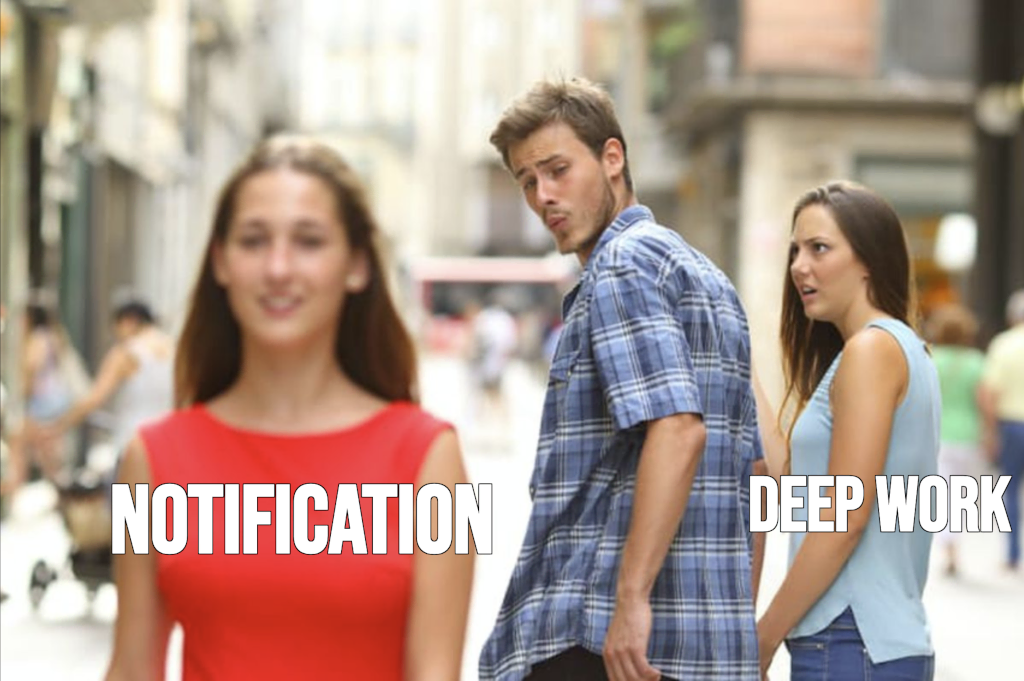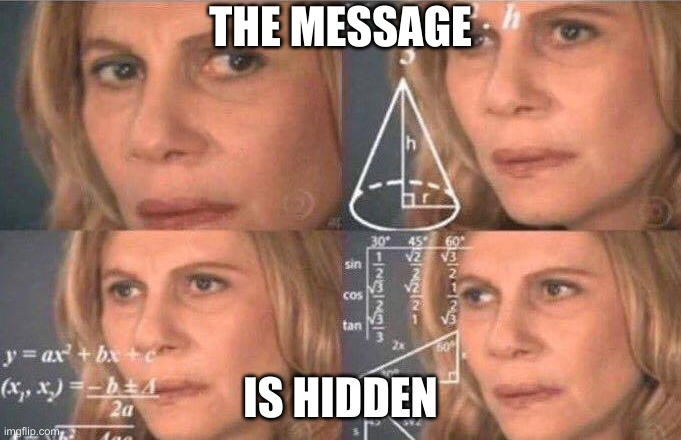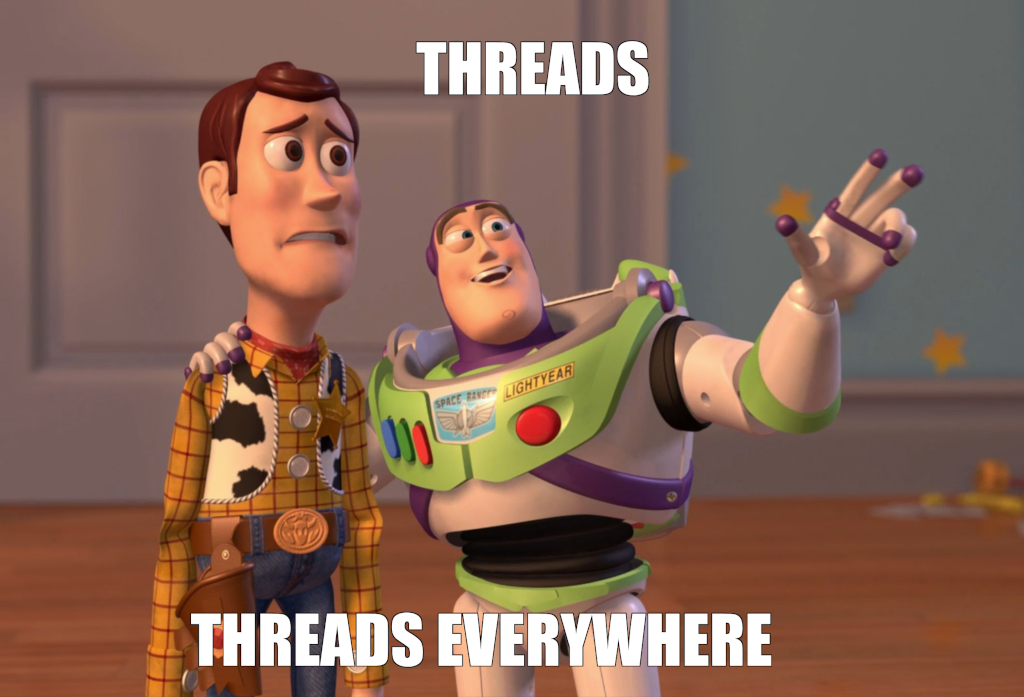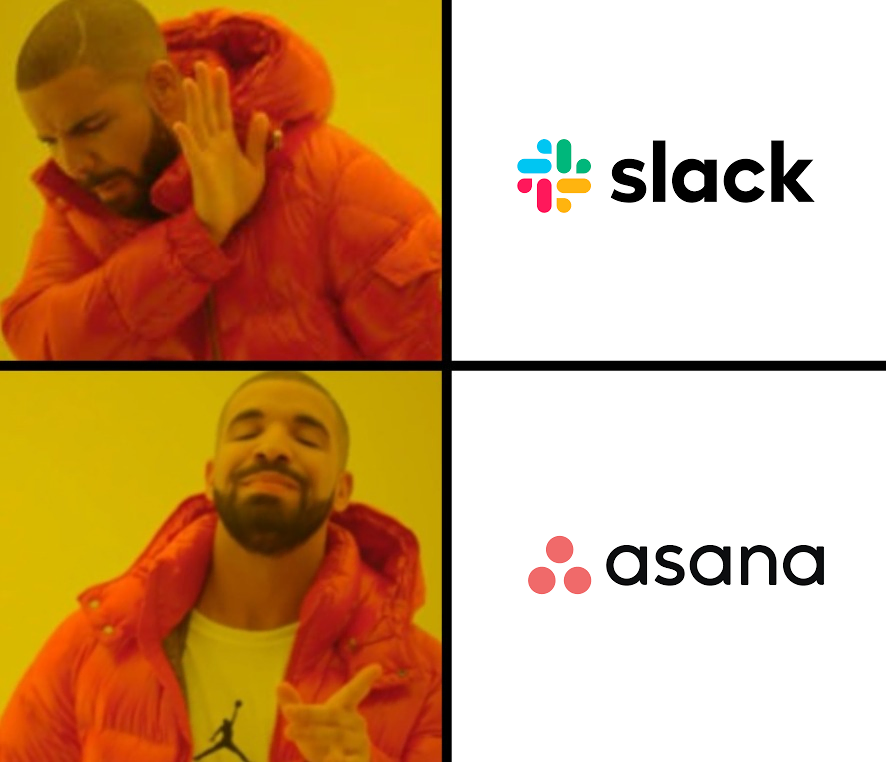The Anti-Patterns of Slack
I hate Slack. It’s a productivity sink disguised as a productivity app—a digital quicksand that slowly but surely drags your workday into an abyss of notifications and reactions.
This is partly a personal preference. I’m more of an email guy, with my own workflow built around GTD and Inbox Zero. After more than 15 years of refining these systems, I recognize that Slack is riddled with subtle anti-patterns that actively hinder meaningful work. It creates significant productivity costs, cleverly disguised as communication improvements. What seems to streamline workplace interaction actually fragments attention, increases interruptions, and subtly shifts workloads in ways that undermine deep work.
Let’s break down exactly how Slack undermines your productivity, one deceptively friendly feature at a time.
The Observer Burden
Slack fundamentally shifts the responsibility of communication from the sender to the receiver. It reminds me of the observer design pattern in programming, where messages are broadcast, and observers pick up what’s relevant. In code, being an observer is essentially free and delegating this responsibility to the receiver makes sense. In human communication, however, being an observer is incredibly expensive. Every message demands attention, evaluation, and a decision: Is this relevant? Does it need a response? Should I save it for later?
Email works differently—the sender must deliberately choose recipients by filling in the To: field. This ensures the burden of relevance stays where it belongs: on the communicator, not the audience.
Now or Never
Slack forces you to take immediate action on messages if you want to save them for later processing. This directly contradicts the Inbox Zero philosophy, where unprocessed items remain visible until explicitly addressed.
With email, pending messages stay in your inbox until you deal with them. In Slack, every message requires an immediate micro-decision: Act now or risk losing it in the endless scroll of conversation. This adds unnecessary cognitive load, especially for those who process communications in batches.

Bob Channels
Creating channels in Slack is too easy. What starts as a well-structured workspace inevitably spirals into a labyrinth of specialized channels, many with overlapping purposes.
Imagine this: you set up a new company, with blank slate, and a reasonable structure of about 10 channels. Six months later, there are over 80. You have #project-alpha, but also #project-alpha-design, #project-alpha-backend, and even #project-alpha-daily-standup. When new team members join, they have no idea where to look for information. Critical decisions are scattered across multiple channels, with no single source of truth.
I myself once was a member of a channel that was called something like #tmp_discussion_with_bob_october and the last time I checked it was still there, unarchived, idle and unused.
This unchecked expansion creates a paradox of choice—too many places to post means discussions become fragmented, and important information gets lost. What should be a simple search for project requirements turns into a digital archaeology expedition, digging through layers of channels to reconstruct the full picture.
The Emoji Tax
The emoji reaction feature seems harmless, but it actually creates subtle social pressure. People feel obligated to acknowledge messages with reactions, even when they have nothing substantive to add.
Here’s how this plays out in practice: A team lead posts an announcement about an upcoming deadline. Within minutes, a cascade of emoji reactions appears—thumbs up, hearts, rocket ships. And if you’re like me, you find yourself staring at the screen, thinking: Do I need to add an emoji too? Will it seem like I don’t care if I don’t? You ultimately add a thumbs up, but this micro-decision consumes mental bandwidth that could have been used for actual work.
This engagement drains mental energy and creates noise that obscures meaningful communication. Do I really need to know that twelve people “hearted” a message? Does an eyes emoji mean someone is looking into it, or just that they’ve seen it? When a colleague reacts with eyes to my feature proposal, should I wait for verbal feedback, or was that their complete response?
Worse, emoji reactions create an illusion of engagement without real substance. Teams may feel like they’re communicating effectively because of high emoji activity, while actually missing substantive discussions about the work that matters.

Green, At Your Service
Slack is designed for real-time conversation, assuming synchronous communication by default. Everybody online, with green dot, ready to chat, signaling that they are available. This directly conflicts with the requirements of deep, focused work.
The green presence indicator creates an unhealthy expectation of constant availability. It becomes a digital leash, with colleagues assuming you’re available to chat if you’re showing as “active”. This erodes the boundaries necessary for focused work, making it significantly harder to carve out uninterrupted time.
Email, by contrast, naturally accommodates asynchronous workflows. Sure, we’ve all had that colleague who calls just to let you know they sent an email. But at its core, your inbox is (or should be) offline and disconnected.
Hidden Messages
On Slack’s free tier, messages expire after a certain period. Even if you deliberately save something for later reference, it might not be there when you need it.
Let me emphasize this: Even if you proactively use the “Save for later” button—actively resisting Slack’s default behavior—the message will still disappear from your queue. I have no idea why Slack even includes a “Save for later” feature in the free tier when it fundamentally fails to deliver on its promise. If saved messages are still subject to deletion, what exactly are we saving them from?
Threads, Threads Everywhere
Threads were meant to organize conversations, but instead, they create hidden discussions that fragment context. Any message can become a thread—a separate conversation, a new unit of information—potentially distinct from others but still somewhat related.
The cognitive burden of tracking these hidden discussions is substantial. Instead of reducing noise, threads introduce yet another layer of friction, forcing users to hunt for information that should have been readily available. Crucial context often gets buried in these isolated sub-conversations, leading to fragmented, disconnected chatter.

In and Out of Slack
All these anti-patterns combine to create an environment where your attention—your most precious resource as a knowledge worker—is constantly under siege. The result? A workday that feels busy but yields little substantive progress.
There are various ways to mitigate Slack’s anti-patterns: avoiding it completely, using it more consciously, or leveraging complementary tools to protect your productivity. But perhaps the most compelling alternative comes from reimagining workplace communication entirely.
At Asana, for example, they’ve created a radically different approach. They don’t use internal email, and even Slack is rare. Instead, their entire workflow centers around tasks—not messages or conversations. As my friend Ric, an Asana employee, describes it: “People send… tasks. And weirdly, it works.”
This approach recognizes a fundamental truth: most workplace communications are actually tasks in disguise. Someone needs a response, a decision, or an action. By treating them as trackable work items rather than ephemeral chat messages, Asana transforms how work flows.
This makes me wonder how many of our productivity problems stem not from our tools’ features, but from their fundamental design philosophies. We’ve collectively accepted chat-based platforms as the natural evolution of workplace communication, without questioning whether they actually serve how we work best.

Before I close this rant, let me mention one single benefit of Slack—a benefit that potentially outweighs all the anti-patterns I mentioned above. It’s a great place to be in when you are working remotely. It fosters a sense of co-presence that’s valuable in remote work environments. That ambient awareness of colleagues can help combat isolation and build connection.
As a remote worker, I completely recognize this. Slack’s casual channels and direct messages provide a much-needed lifeline of human interaction. The quick exchanges—and yes, even the emoji reactions—create a digital approximation of office camaraderie that email simply can’t replicate.
This social benefit might be reason enough to use Slack, but let’s be honest about what it is: a digital water cooler, not a productivity tool. It’s a space for social connection and ambient awareness, not efficient communication or deep work.
The tools we use shape the way we work in profound ways. Slack isn’t just a neutral communication platform—it’s an attention economy marketplace where your focus is the currency being traded. Recognizing these anti-patterns will allow you to use it intentionally, preserving your ability to do the deep, meaningful work that truly matters. Good luck with your struggle!
Discuss this post on Hacker News, X, or LinkedIn.